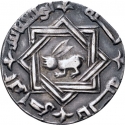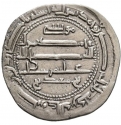You are about to finish your registration. Please check your mailbox (including spam folder). There should be a letter with a confirmation link. Check setting to make sure that your e-mail address is correct.
Send letter againDescription
The Abbasid Caliphate (Arabic: الْخِلَافَةُ الْعَبَّاسِيَّة) was the third caliphate to succeed the Islamic prophet Muhammad. It was founded by a dynasty descended from the prophet's uncle, Abbas ibn Abdul-Muttalib (566–653 CE), from whom the dynasty takes its name. They ruled as caliphs for most of the caliphate from their capital in Baghdad in modern-day Iraq, after having overthrown the Umayyad Caliphate in the Abbasid Revolution of 750 CE (132 AH). The Abbasid Caliphate first centered its government in Kufa, modern-day Iraq, but in 762 the caliph Al-Mansur founded the city of Baghdad, near the ancient Babylonian capital city of Babylon. Baghdad became the center of science, culture and invention in what became known as the Golden Age of Islam. This, in addition to housing several key academic institutions, including the House of Wisdom, as well as a multiethnic and multi-religious environment, garnered it a worldwide reputation as the "Center of Learning".
Abū al-Faḍl Jaʿfar ibn Muḥammad al-Muʿtaṣim bi-ʾllāh (822–861), better known by his regnal name Al-Mutawakkil ʿalā Allāh ("He who relies on God") was the tenth Abbasid caliph, under whose reign the Abbasid Empire reached its territorial height. He succeeded his brother al-Wathiq. Deeply religious, he is known as the caliph who ended the Mihna (persecution against many Islamic scholars), released Ahmad ibn Hanbal, and discarded the Muʿtazila, but he has been also subject of criticism for being a tough ruler towards the non-Muslim citizens.
His assassination on 11 December 861 by the Turkic guard with the support of his son, al-Muntasir, began the troubled period of civil strife known as "Anarchy at Samarra".
Struck in thick narrow flans.
Obverse

|
Depicts the inscriptions in Arabic “He sent him with guidance and the true religion to make it victorious over every religion although those who associate others with God dislike it”, "For God", "Muhammad is the Messenger of God” and "Al-Mutawakkil ʿalā Allāh". محمد رسول الله ارسله بالهدى ودين الحق ليظهره على الدين كله ولو كره المشركون |
|---|---|
Reverse

|
Depicts the inscriptions in Arabic "To God belongs the command before and after, and at that time the believers will rejoice in the victory of God" and "In the name of God. This dirham was struck in Misr (Egypt) in the year 247", “There is no god but God alone / He has no associate", "al-Mu'tazz لله الأمر من قبل و من بعد و يومئذ يفرح المؤمنون |
| Edge |







